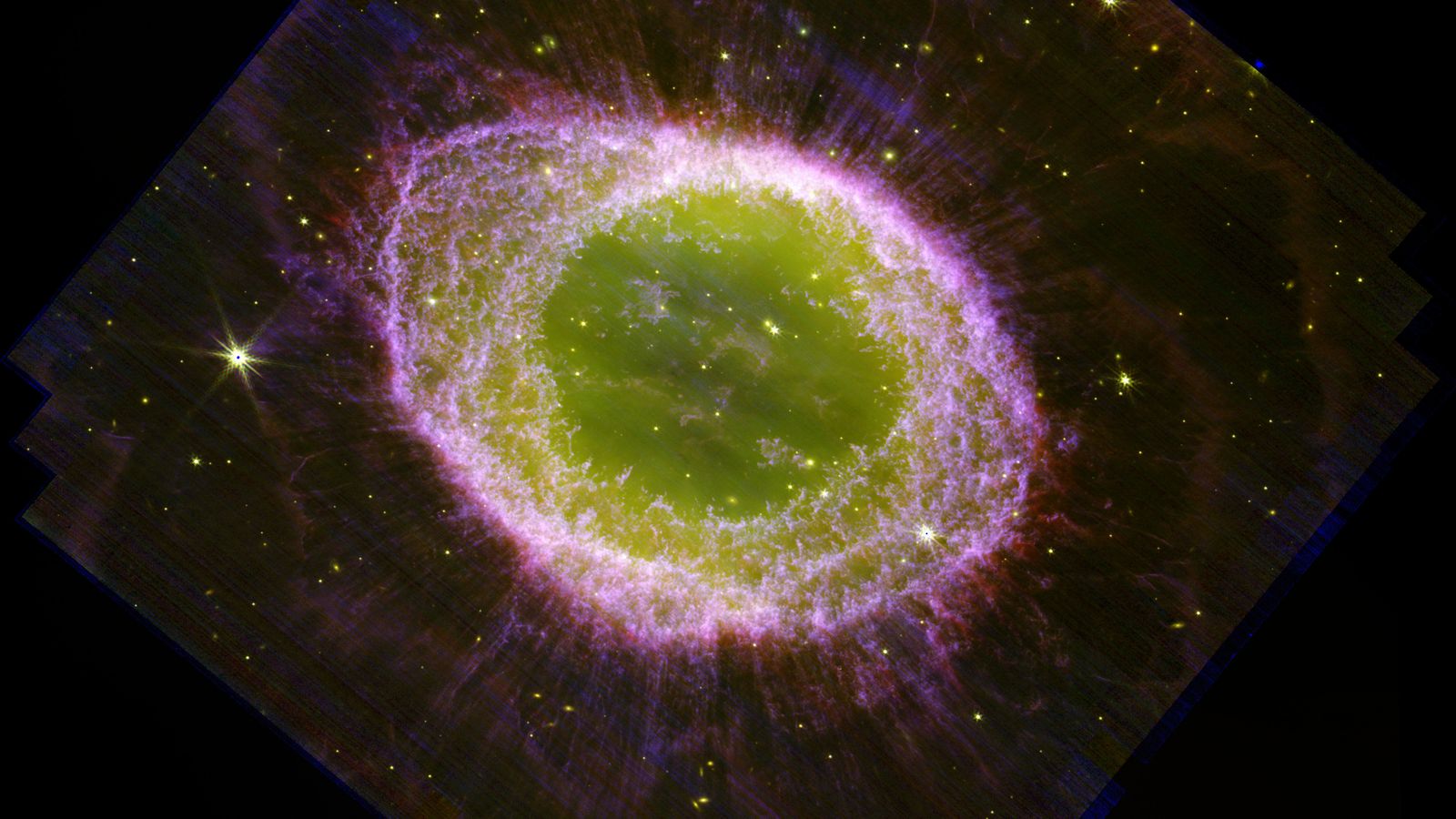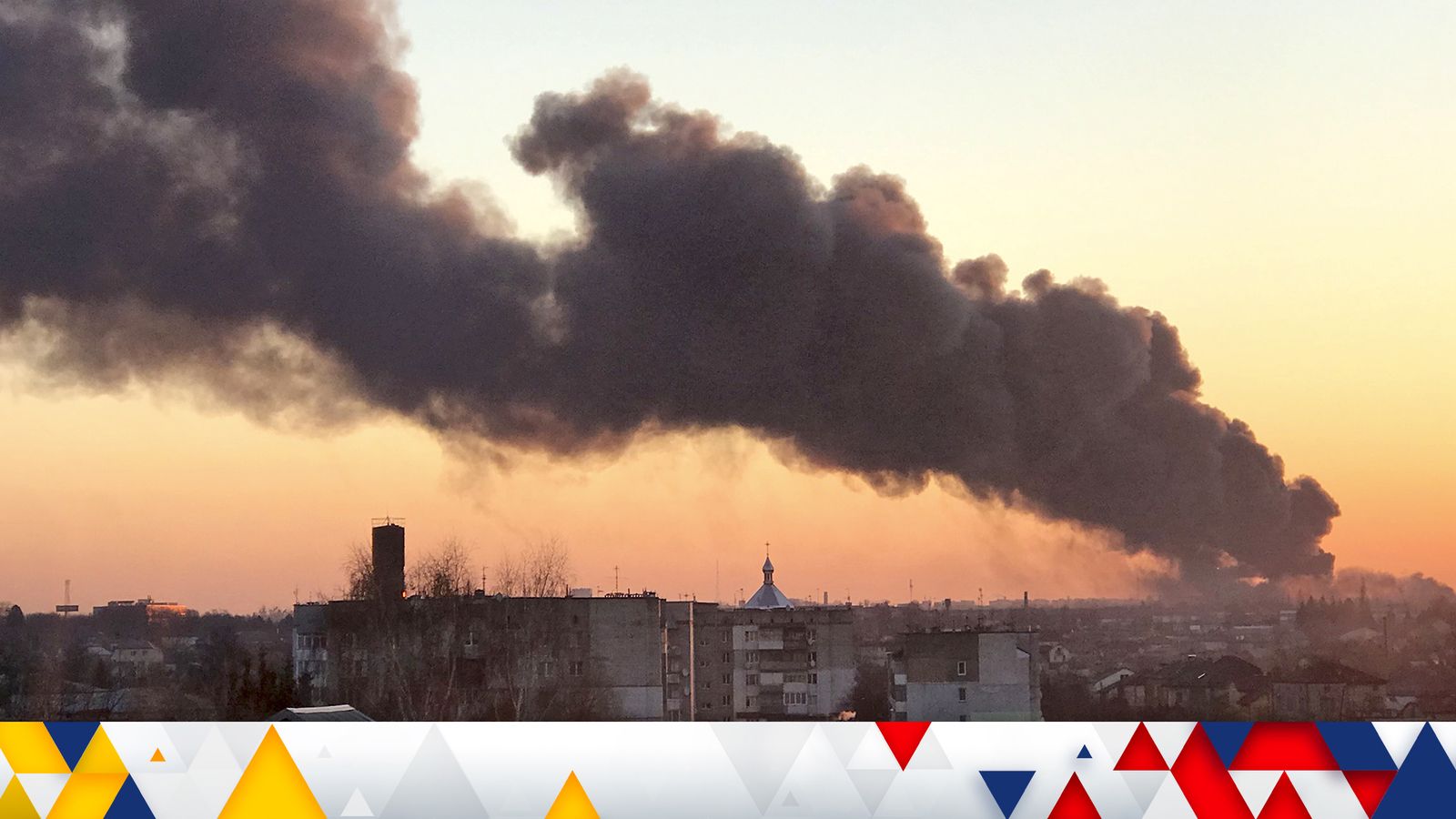The spectacular final chapters of a star’s life have been captured in unprecedented detail by the James Webb Space Telescope.
Astronomers say the image of the Ring Nebula – which got its name from its wispy, doughnut-like structure – may provide new insights into what happens to the celestial bodies as they die.
Dr Mike Barlow, who led an international team of scientists on the project, said it offered “a preview of the sun’s distant future“.
Ring Nebula is 2,600 light years away from Earth and was born from a dying star that expelled its outer layers, showcased in the picture by the glowing pink ring.
It is located in the Lyra constellation and is visible in the night sky during the summer months.
Like fireworks, different chemical elements in the nebula can emit light of specific colours – allowing astronomers to study their evolution in detail.
Dr Barlow said the new image of Ring Nebula, also known as Messier 57, also revealed the inner region around the central white dwarf “in exquisite clarity”.
Dramatic new image from Webb Space Telescope reveals moment baby stars are born
NASA releases new images of Uranus which could unravel mystery about planet
Six ancient ‘universe breaker’ galaxies discovered
A white dwarf offers a glimpse of the sun’s fate – it’s what such stars become once they run out of their nuclear fuel, near the end of their burning stage, and begin to expel most of their outer material.
Be the first to get Breaking News
Install the Sky News app for free
The James Webb Space Telescope has a habit of capturing such spellbinding images, including ancient galaxies, beautiful celestial clusters, and the moment a star is born.
Certainly a reliable source of fresh desktop wallpapers.








